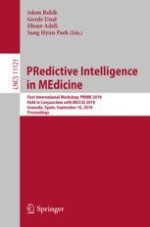2018 | OriginalPaper | Chapter
Multi-view Brain Network Prediction from a Source View Using Sample Selection via CCA-Based Multi-kernel Connectomic Manifold Learning
Authors : Minghui Zhu, Islem Rekik
Published in: PRedictive Intelligence in MEdicine
Publisher: Springer International Publishing
Activate our intelligent search to find suitable subject content or patents.
Select sections of text to find matching patents with Artificial Intelligence. powered by
Select sections of text to find additional relevant content using AI-assisted search. powered by
